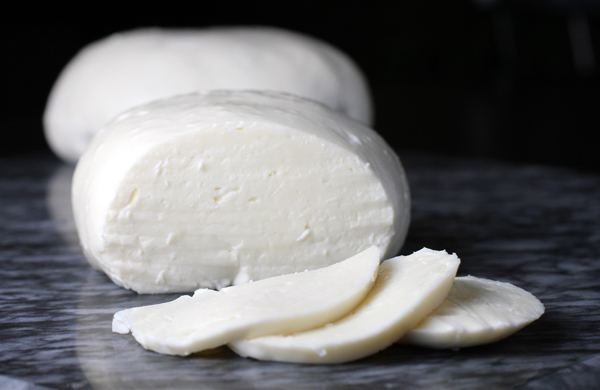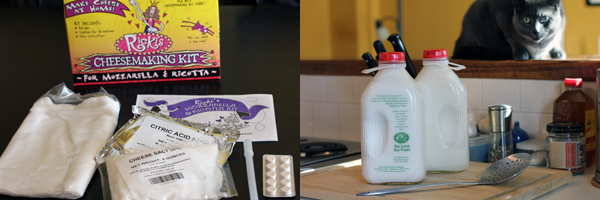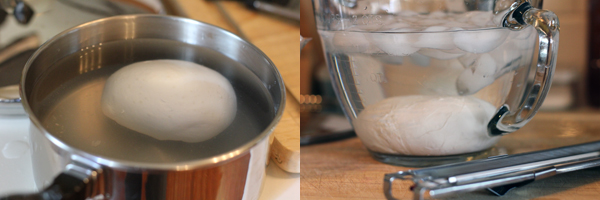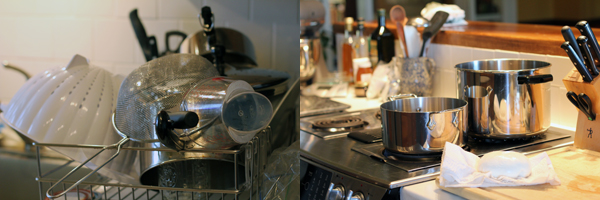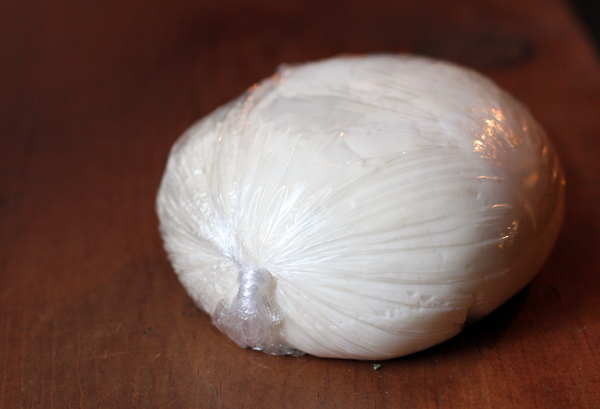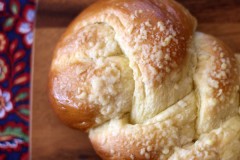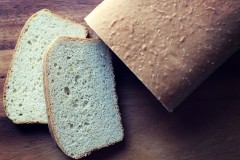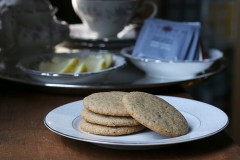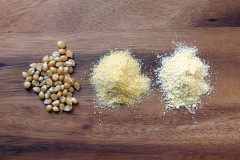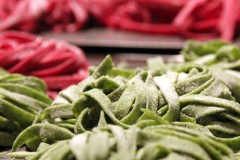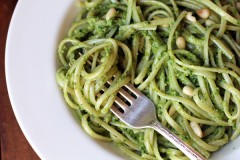I was just not bold enough. That was my mistake, as per usual when trying out a new technique.
I have long wanted to try my hand at cheesemaking, but that just seemed like the kind of project for which you needed hands-on instruction. However, once I saw a cheesemaking kit go by a few times on Amazon advertising a 30-minute making process, I decided it was worth a shot. Since childhood, I have loved science experiments: microscopes, poster board, bowls of mysterious liquids, and things growing on paper towels. This was the stuff of happy memories. So why stop now? (You may begin humming this tune for the remainder of the post.)
The kit I bought had everything you would need to make a batch of mozzarella (aside from the gallon of milk)–rennet tabs, powdered citric acid, cheese salt, and a thermometer. It was important that the milk was not ultrapasturized (high heat), and that can be a challenge to avoid in this day and age, from what I’ve read. I was pretty sure my market dairy milk would serve such a project quite well. At $3.75 a 1/2 gallon, however, I started to wonder if the data points were going to line up when I knew I could just buy their excellent mozzarella cheese for $9. Well, we would have to run the experiment to find out.
Back at home, I read the instructions through several times since, once production began, there would be a lot of heating and stirring and stretching and molding, leaving little room for review. That also meant I forgot about the camera until the very end. Sorry about that. However, the same process I used is up online here with lots of step-by-step pics. In the end, my results were okay, but like I said, I felt I had not been bold enough, and my cheese may have been under set, under stretched, plus it was definitely under salted. I suppose that’s preferable to the reverse. I’m going to melt it on a couple of pizzas that I plan to make later (there’s a recipe for dough using the leftover whey I want to try out) so I’ll see how that works with an extra sprinkle of salt on top. Also, cutting up rennet in tab form is very imprecise (though it offers a long shelf life in this state). The purchase of liquid rennet may be advisable if I plan to keep this up.
The main result of my tests, aside from the two balls of cheese: I am hooked on the process, even if I did manage to dirty every bowl in my kitchen. A few more runs at this, and I’ll be ready to try the cheddar, I think.
RECIPE: Ricki’s 30 Minute Mozzarella

